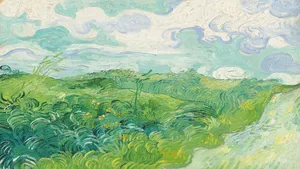Celebrating World Heritage Day with UNESCO

Is there a place you have never been, but always felt a special connection to? From Peru’s Machu Picchu to Mount Kilimanjaro in Tanzania, the Temple of Angkor Wat in Cambodia to the Canadian Rocky Mountains, these wonders of the world are as diverse as they come. But they have one thing in common – they are part of the UNESCO World Heritage. Today 1,157 sites strong, we cannot help but feel the connection to these outstanding places that tell the stories of our shared humanity.
As citizens, we also share the responsibility to protect them. As the UN agency dedicated to culture, we pride ourselves on our leading expertise to identify, evaluate and reinforce efforts to safeguard heritage. We bring together governments, communities, heritage experts and non-governmental organizations to explore and realize a vision of heritage as a global public good.
Here at UNESCO, we also work to enhance the enjoyment and access to World Heritage through responsible use of new technologies. This is why we are pleased to partner with Google Arts & Culture for the International Day for Monuments and Sites once again, to invite people around the world to visit these places near and far through the ever-growing collection of virtual visits.
The Everglades National Park is an international Biosphere Reserve and a Wetland of International Importance. A vast, intricate network of forests and wetlands spread across South Florida, it once encompassed six million acres, but today the remaining “River of Grass” is less than half its original size.
Mount Kilimanjaro supports a unique combination of eco-climatic zones that takes you to the equivalent of a trip from the equator to the arctic in a brief tour. As one climbs Kilimanjaro, vegetation and weather changes in response to the changing elevation.
Nice, located on the Mediterranean, at the foot of the Alps, near the Italian border, in the Provence–Alpes-Côte d’Azur region, reflects the development of a city devoted to winter tourism, making the most of its mild climate and its coastal situation, between sea and mountains.
The Getbol, Korean Tidal Flats, represent one of the Earth’s most important habitats for the conservation of biodiversity, with reports of 2,150 species of flora and fauna living here, including 22 globally threatened or near-threatened species.
The Papahānaumokuākea World Heritage site is a remarkable property that includes the Northwestern Hawaiian Islands and 140,000 mi2 (362,000 km2) of remote ocean, and comprises a complex array of marine and terrestrial ecosystems.
What is World Heritage
World Heritage is an official designation given to a site following careful consideration of a proposal submitted by the country and evaluations undertaken by experts.
Whether a property is awarded this designation is determined by the World Heritage Committee. The Committee, made up of 21 countries from all regions, meets once a year to deliberate if the proposed sites meet specific criteria and demonstrate what is called the “Outstanding Universal Value.” When a cultural or natural site has an OUV, it is “so exceptional as to transcend national boundaries and to be of common importance for present and future generations of all humanity.”
The preparation of the nominations is at once lengthy and intensive. UNESCO accompanies this process and ensures the completion of all necessary steps, so the work of the Committee can be done smoothly. Once a site is inscribed on the World Heritage list, we work with countries and communities towards sustainable protection and promotion.
Why it’s important
There is more to World Heritage sites than meets the eye. We must remember that these extraordinary places carry deep meanings for communities and beyond – urban centres layered with history, monuments embodying experiences of generations past, ancestral homes and hotspots for biodiversity. The protection of World Heritage, therefore, contributes to the remembrance of who we were and inspiration for who we want to become.
Sadly, the threats against natural and cultural sites are rising. According to our latest research, sixty per cent of World Heritage forests are threatened by climate change-related events, while glaciers in one-third of World Heritage sites are set to disappear by 2050.
Chunakhola Mosque at the Mosque City of Bagerhat, Bangladesh, is on an isolated low mound in the midst of cultivated fields. The beautiful mosque is heavily covered by the inclement salinity of the area that’s endangering the structure.
The Great Spa Towns of Europe are a ‘Transnational Serial’ World Heritage site, formed of 11 famous historic spa towns and cities in seven countries, which prove exceptional testimony to the European spa tradition, a complex urban, social and cultural phenomenon that has its roots in antiquity, but which gained its highest expression from around 1700 to the 1930.
The pyramids at Meroe in Sudan are outstanding examples of Kushite funerary monuments, which illustrate the association with the well preserved remains of the urban center of the Kushite capital, Meroe.
Founded in the early 18th century 513km north of Rio de Janeiro, the Historic Town of Ouro Preto (Black Gold) covers the steep slopes of the Vila Rica (Rich Valley), center of a rich gold mining area and the capital of Minas Gerais Province from 1720-1897
In the face of climate-induced threats, UNESCO works with partners and countries to better monitor these impacts. For example, the Urban Heritage Climate Observatory brings together stakeholders across climate science, urban heritage, and Earth observation to document the effects of climate change on World Heritage cities using Earth Observations tools. Such data can inspire adaptation measures that correspond to the risks and impacts. Another interesting UNESCO project is the Environmental DNA Expeditions, a citizen science initiative for marine World Heritage sites. Throughout 2023, volunteers around the world are gathering water samples that help determine the species richness of the area without extracting living organisms – embodying UNESCO’s ethical, inclusive and innovative approach to safeguarding.
Let’s celebrate
World Heritage is about what we share. No matter where we are from, we all have the right to appreciate the outstanding heritage around the world.
On this International Day for Monuments and Sites, I invite you to take a journey of humanity through online exhibitions of World Heritage sites.






